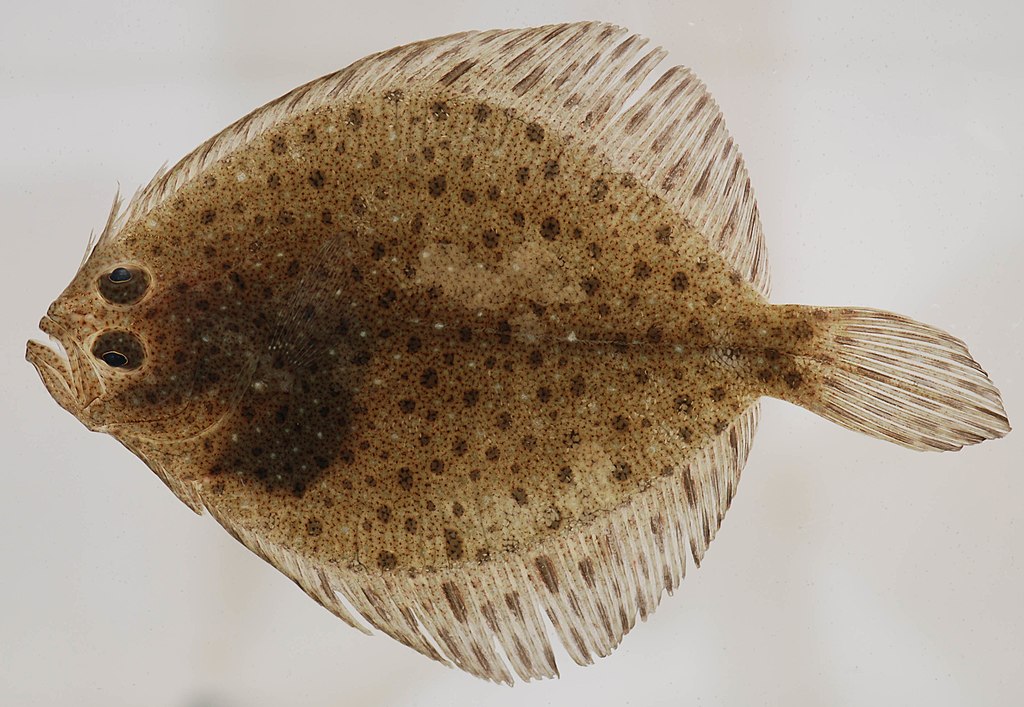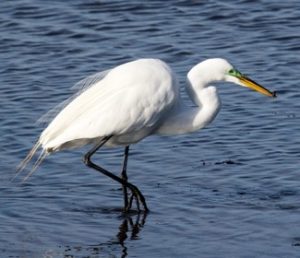Windowpane Flounder
Scophthalmus aquosus

Image by Robert Aguilar, Smithsonian Environmental Research Center, CC BY 2.0
Physical: The windowpane flounder is one of five species of flounder found regularly in the Barnegat Bay. The species gets its name from their thin and near-translucent bodies, especially for smaller flounder. As left-eyed flatfish, the left side of the body becomes the top side as an adult. They’re green-brown with darker brown and white spots on top, white on the bottom. They’re also wider and more round-bodied than other flounder, instead of oval. Adults reach maturity between 8-12 in (21-30.5 cm), with a maximum size near 18 in (45.5 cm).
Habitat: Their range stretches from Canada to northern Florida. They prefer sandy or mud bottoms, as well as artificial reefs. Newly metamorphosed windowpane will settle inshore, and start to migrate toward offshore depths as they age. As a transient species, they only reside in the Barnegat Bay for part of the year.
Feeding: Juveniles feed on copepods. Adults are bottom feeders, camouflaging themselves in the sediment to ambush their prey. They eat shrimp, worms, small fish, lobsters, and crabs.
Breeding: May to August. Spawning occurs at night, near or on the bottom. The eggs float in the water until they hatch.

Sign up for email or connect through social media.